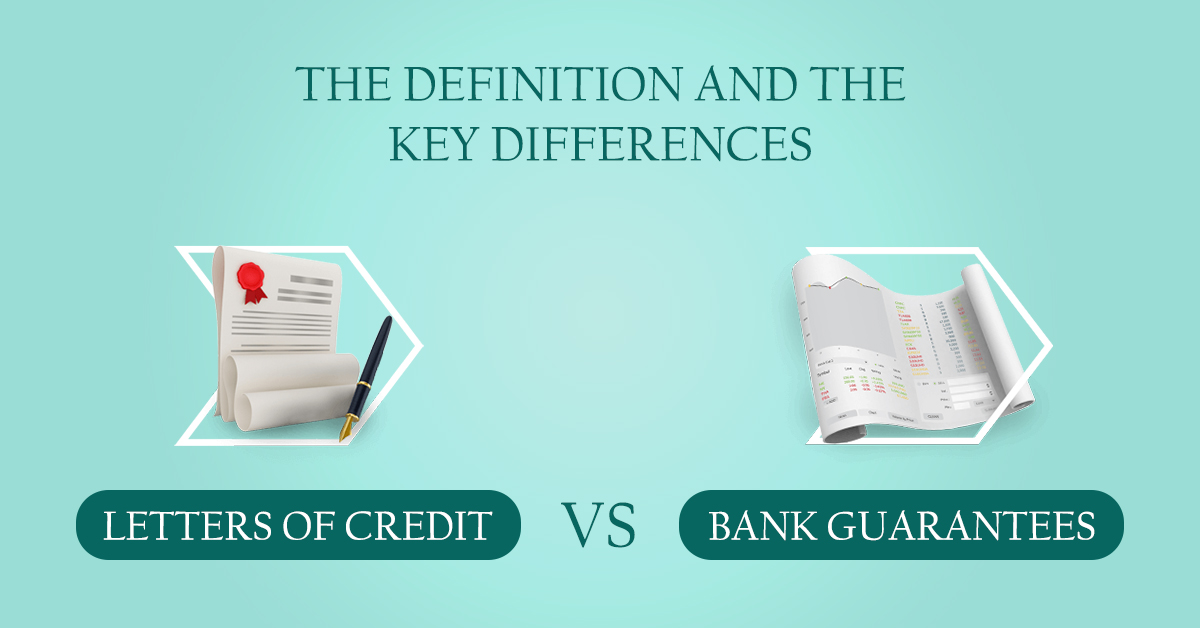Month: February 2021
Trade Credit Finance: The Advantages and Disadvantages
Trade credit finance is the term for a system established between the vendor and buyer. It is where the buyer doesn’t have to pay immediately and the. Vendor specifies when the debt must be paid. It is important to know about trade credit and its advantages and disadvantages. This will provide an insight into trade finance well what it entails.

What is trade credit?
Trade credit enables importers and exporters to engage in global trade by providing the necessary finance. This finance enables businesses to pay for goods or services on time and prevent the possibility of defaulting. Trade finance is offered by different organizations, from small non-bank financiers to large finance institutions. An LC, or Letter of Credit, is a tool of trade finance. This is a promise offered by a financial institution to pay the exporter once the services or products meet the contract agreement. The importer must provide an LC to the exporter before the deal is completed.
Trade Credit – the advantages and disadvantages:
The advantages of trade credit
Drives business growth
Trade businesses must balance the risk of non-payment and the ability to pay for products and services. Trade finance can be considered working capital for the short to medium-term. It offers security when importing or exporting.
Reduces risk
Trade finance reduces the risks associated with credit and payment. It helps suppliers to fulfil bulk orders. Trade credit finance focuses on the goods and the trade cycle rather than the borrower. This means even small-sized businesses can trade large volumes through credit.
Can Increase revenue and margins
Trade finance enables supplier companies to increase the order size potential and boost revenue and margins.
Download Book Now

Can Reduce the risk of bankruptcy
Challenging creditors and debtors with deferral in payments can have a negative effect. Trade credit facilities ease the pressure on cash flows and help to avoid problems.
Diversification of the supplier network
The global marketplace accommodates manufacturers, distributors and traders. Trade finance increases the flow of money into the system. This allows business owners to diversify their supplier network and maintain risk mitigation structures. Trade finance drives efficiency in markets while boosting competition. It creates a safer framework for increasing trade volume.
Discounts for fast payments
Many trade credit agreements offer a discount when a business pays within number of days. For businesses with healthy cash flow, it is beneficial to pay invoices early. These discounts provide increased profits.
Lower spending
Trade credit financing provides the capital to increase stock. Trade credit finance can be used as working capital for infrastructure improvements, payroll or for liquidity.
Provides a competitive advantage
Securing goods on credit provides a competitive advantage. This confers the ability to meet market demands and remain agile. Through trade finance the business can ensure it has a constant supply of goods.
The disadvantages of trade credit
Trade credit can be rescinded
Vendors have no obligation to provide credit. Some will not provide credit until there is a regular payment history. If a company is habitually late making payments, the vendor may require cash on demand.
In extreme situations, vendors will sever ties with businesses that have failed to make regular payments. Sometimes the trade credit facility will be rescinded.
Penalties and fees
Discounts are available for early payment. Penalties may apply for late payments, which may be charged at 1 to 2 per cent.
Product quality risks
Sellers may try to mitigate risk by covering contractual responsibilities like agreed service levels, warranties or maintenance. Buyers may try to reduce risks related to external factors like unfavourable weather conditions during shipment or negligence at the production stage. Even after contracts are signed by both parties, quality can still be a reason for disputes. The issue can be resolved by approaching inspectors or going for bonds or even certifications.
Transportation risks
Choosing a reliable freight forwarder and securing cargo insurance can help to reduce transportation risk. If the product is not properly insured by the buyer then insurance may be invalidated in the case of damages.
Manufacturing risks
The cost of making modifications to a product is generally covered by sellers. This is common especially when products are tailor-made for unique needs.
Currency risks
Businesses of all kinds can be impacted by the exchange rate which can directly affect profit margins. It is always important to have an understanding of the possible impact of foreign exchange on the business.
Bad debt risks
Late payments are an issue in trade finance. Non-payment is a critical issue. Businesses using trade credit may cease trading or may stop making payments. In such cases, the losses faced are written off as bad debt. It can be beneficial to use trade credit insurance so to insure against such bad debts.
Cash flow issues
Cash flow problems can occur when buyers don’t pay or make late payments. Outstanding bills can be an issue for suppliers who must pay creditors while trying to secure overdue cash from buyers. It is essential to ensure sufficient liquid cash and ensure not to extend credit.
Summary
It is important to understand the advantages and disadvantages of trade credit. If the business is considering a trade credit facility, it is advisable to be aware of the details.
Popular Post Like This
More Posts Like This
Unlocking Cash Flow for Expansion in Irelandâs Food and Catering Industry
From Harvest to Market: Financing the Future of the Sugar Trade
Letters of credit vs Bank guarantees The Definition and the Key differences
A Bank guarantee or a letter of credit are very similar. Both are essentially the assurance that borrowers will repay a debt to third parties irrespective of their financial circumstances.
If borrowers are unable to pay, they must still repay their lenders. Both sources of finance facilitate trade by backing the borrower financially. They significantly reduce transaction risks and speed up the trade process.

However, there are underlying differences between the two. Letters of credit are widely used in global transactions. This is due to the variation of laws in different countries, especially when it is difficult for both parties to meet in person.
Letters of credit are more widely used in international trade. A bank guarantee can be a better option in real estate contracts and infrastructure projects.
Bank Guarantee
A lending institution makes a promise that a bank will pay on behalf of a debtor if they are unable to pay. A bank guarantee generally imposes more contractual obligations than a letter of credit.
A Bank guarantee fundamentally protects both parties from credit risk. This is the most important factor in the trade.
For example, a construction company enters a contract with a cement supplier. They go to the bank for the contractual agreement. Both parties must prove their financial capabilities to meet the terms and conditions of the contract, which are primarily financial.
If the supplier fails to deliver the cement on time, the construction company notifies the bank. The bank will then pay the company on behalf of a supplier as part of the bank guarantee.
Download Book Now

Types of bank guarantee
Bank guarantees are similar to other financial instruments. There are two types:
- Direct bank guarantee – Issued by banks for domestic and international businesses.
- Indirect bank guarantee – Issued for government projects or those related to a public entity.
Other types of bank guarantees:
- Shipping guarantee: Given to the carrier of a shipment arriving before documents are received.
- Loan guarantee: A financial obligation of the bank to pay the money if a borrower defaults.
- Advance payment guarantee: This guarantees the payment in advance even if a seller does not supply goods within a specified time.
- Confirmed payment guarantee: This guarantee is irreversible. It compels the bank to pay to a beneficiary within a certain defined date.
Letters of credit
A Letter of credit [LC] is a financial instrument that proves creditworthiness. It is also referred to as documentary credit. An LC is often confused with bank credit as they both share certain common characteristics.
A Letter of credit guarantees payment to a seller from a buyer within a specified time. If a buyer fails to pay, the bank will pay on his behalf the full amount to a seller.
However, they have pre-defined terms and conditions. Once these criteria are met, the bank will release the funds to the seller. Let’s understand it with a simple example:
A UK-based wholesaler orders goods from a French company. Both parties have no previous business relationship. There is a risk of non-payment as the wholesaler has inadequate information about a new company with which he wants to trade. They then request a letter of credit to ensure the payment.
The buyer applies for a letter of credit to a bank where they have sufficient funds for a line of credit. The bank then issues a letter of credit on behalf of the buyer. The LC guarantees the payment, provided certain conditions met by the seller.
The seller has specific criteria to comply with also, which are specified in the LC. Furthermore, they must meet all the terms and conditions with documented evidence. The bank will transfer the funds only after all terms and conditions are met.
An LC facilitates international trade with secure transactions. It accelerates trade and creates new opportunities for businesses.
Similar to a bank guarantee, there are various types of letters of credit:
- An irrevocable letter of credit – The buyer is obliged to pay the seller for the goods.
- A confirmed letter of credit – Guarantee from the second bank. It issues the letter in case of questionable credit from the first bank. It basically confirms the payment if the issuing bank defaults on the payment
- An import letter of credit – Enables importers with finance to pay in advance
- An export letter of credit – Obliges Obligation to the buyer’s bank to make the payment given all terms and conditions are met
- A revolving letter of credit – Allows both parties to withdraw from the contract within a specific period
Underlying differences
Both reduce payment risks, secure transactions, and work as a catalyst to increase trade.
Letter of credit Vs Bank guarantee – comparison
| # | Letter of credit | Bank guarantee |
|---|---|---|
| Definition | A Letter of credit is a financial instrument to guarantee payment. | A Bank guarantee is an assurance given by the bank on behalf of a buyer to the beneficiary. |
| Liability | Primary | Secondary |
| Risk levels | Lower for traders, higher for the bank. | Higher for traders, lower for the bank. |
| Parties | Generally 5 or more – applicant,beneficiary, issuing bank, negotiating bank, confirming bank. | 3 – applicant, beneficiary and bank |
| Payment terms | Payment is transferred upon the fulfillment of all conditions. | Payment is made even if the obligation is not fulfilled. |
| Preferred for | Import and Export business. | Government projects. |
Final words:
A Letter of Credit is widely used in international trade. They are becoming increasingly popular in domestic business as well. It is owing to the assurance of payment.
The seller must be paid. The buyer must pay on time. A letter of credit serves both purposes. A bank guarantee is usually preferred to fulfill certain obligations. It helps meet requirements and assures payment to the beneficiary.
Popular Post Like This
